Author Archive
52 Ancestors in 52 Weeks #61 & 62—Henric Miettinen & Anna Toivain
At last we reach the end of my series on the stories of my ancestors. Over a year ago, I took up the challenge of writing about 52 Ancestors in 52 Weeks. I began with my parents and worked backwards. At the end of last year, I had written about 52 ancestors, but it seemed a shame to stop part way through a generation. I elected to continue to relate what I know of each of my third great-grandparents. The final couple on this list is Henric Henricson Miettinen (ca. 1804-1836) and Anna Andersdöttir Toivain (1802-a. 1858).
Henric was born at Halivaara in the Karelian region of Finland about 1804. He lived there all his life and worked as a farmer.
On December 27, 1819, he married Anna Toivain in the Juuka parish. She was from the nearby village of Kajo. Together they had seven children:
- Carin, b. 1821,
- Henric, b. 1823,
- Christina, b. 1827,
- Margret, b. 1829,
- Johan, b. 1830,
- Anna, b. 1832, my great-great grandmother, and
- Brita, b. 1835.
Like so many Finnish men of the time period, Henric had a short life. When he was thirty-two years old, he contracted a fever. He died on October 22, 1836 when my great-great grandmother Anna was just four years old. Henric was buried in Juuka parish.
His wife survived him by a number of years. She lived until at least 1858. The previous year, she had attended the local kinkeri, or religious meeting, in Juuka parish where confirmed Lutherans were required to demonstrate their knowledge and understanding of the Lutheran faith. In 1858, her name appears on the communion register, but no record of her has been found after that.
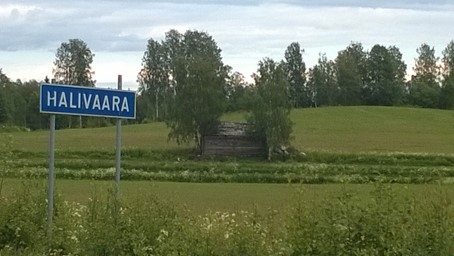
Genealogy Projects in The Works
 My genealogy world seems to speed up in the spring. I have several events ahead that get in the way of doing much research these days:
My genealogy world seems to speed up in the spring. I have several events ahead that get in the way of doing much research these days:
- My husband/tech advisor and I will offer a presentation to our Norwegian study group next month. In a program called The Push and the Pull, we plan to discuss why people left Norway and why they settled where they did in the United States.
- We have two great genealogy seminars coming up in the Denver area. David Allen Lambert of the New England Historic Genealogical Society will speak to the Colorado Genealogical Society in April. Dr. Fritz Juengling, a German consultant at the Family History Library in Salt Lake City, will address the Colorado Chapter of the Palatines to America in May. A new neighbor of mine who is interested in genealogy will attend these seminars with me.
- My most ambitious trip this year will be a choir tour through the Reformation sites in Germany and the Czech Republic. My family has been Lutheran since the 1500’s, so I am eager to find my spiritual roots. We will add a few days to the choir tour to visit my husband/tech advisor’s ancestral villages in Germany. In order to get ready for this trip, I am spending much of my free time singing instead of doing genealogy.
Once I have completed the planning for these events, I will get back to my day-to-day research tasks. I cannot believe we are almost through the first quarter of the year, and I am nowhere near finished with all to searching I want to do for this’s year’s project on my elusive German ancestors.
52 Ancestors in 52 Weeks #59 & 60—Henric Lambin & Walb Ruottin
My third great-grandfather Henric Mårtensson Lambin came into the world on December 2, 1806 at Nunnanlax, in the old Swedish county of Savolax and Karelia. Three years later, the Swedes ceded their Finnish lands to Russia, and Finland became a Grand Duchy. Henric lived most of his life as a subject of the Tsar of Russia.
Henric’s parents had him baptized in their local Juuka parish on January 5, 1807. This parish lies on the western shore of beautiful Lake Pielinen, near present-day Koli national park and the highest point in Finland. The land is heavily forested and known for its soapstone deposits.
Henric grew up to be a farmer. When he was twenty years old, he married Walb Johansdottir Ruottin (b. abt. 1808) from the nearby village of Ahmovaara. The wedding took place in Juuka parish on October 14, 1827.
Henric and Walb had two known children, Henric (b. 1832) and my second great-grandfather, Matti (b. 1835). The family originally lived at residence no. 24 in Henric’s home village, Nunnanlax.
By 1837, they had moved on to the village of Kuhnusta. There, Henric soon was stricken with typhoid fever and died at the age of 30 on February 10, 1837. He was buried in the Juuka parish.
Walb remarried the next year on September 1, 1838, again in Juuka parish. Her second husband was Christer Mårtensson Karjalain (ca. 1811-1842). Walb and Christer also had at least two children, Eric (b. 1839) and Christina (b. 1841). When Christina was just a few months old, Walb tragically lost another husband. On June 2, 1842, 31-year-old Christer died of a heart attack.
A few years later, Walb married for the third time. On April 14, 1850, she and Anders Rompanen were married in the Juuka parish. His fate is unknown.
After 1850, Walb’s name appears as Walborg in the church communion book for her son Henric’s household in Kuhnusta. The final listing came in 1860 when she would have been about 52 years old. It is unknown how long she lived after that. Probably she, too, is buried in the Juuka parish. Here is the current church building, built in 1851:
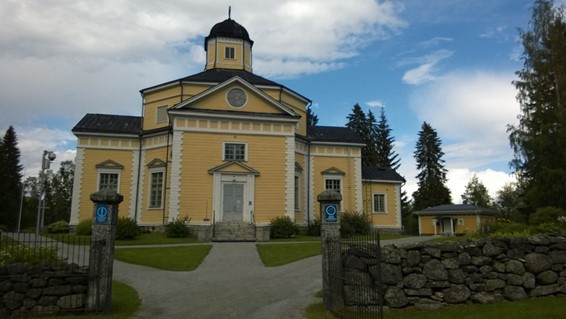
Centenarians in the Family
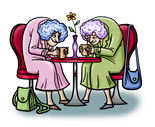 We have some longevity in our family. My own father will reach the age of ninety this year, and several of his cousins lived into their nineties, too. One claimed she would be the first Reed to live to the age of 100, but she did not make it. Maybe my father will claim that accomplishment.
We have some longevity in our family. My own father will reach the age of ninety this year, and several of his cousins lived into their nineties, too. One claimed she would be the first Reed to live to the age of 100, but she did not make it. Maybe my father will claim that accomplishment.
Some of his more distant relatives have lived even longer than that. I know of two well-documented cases of women in our family who passed the century mark:
- Maggie Sherman Hendricks (1872-1976). Maggie was my dad’s first cousin, twice removed, on his father’s side. The daughter of Anderson Sherman and Sarah Jane Prewitt, she was born in Indiana. She died at age 104 and is buried in the Greenlawn Cemetery in Franklin, Indiana. The family story says that Anderson Sherman’s maternal grandmother, who was my dad’s third great-grandmother, lived to be 111 years old. Perhaps Maggie (and my dad!) received some good genes from her.
- Lula Mae Riddle Ferris (1893-1999). Lula Mae was a Michigan farm wife and my dad’s first cousin, once removed, on his mother’s side. Her parents were Ethan Henry Riddle and Sophronia McClish. The maternal line for both Ethan Riddle and my dad comes from New England stock which is known for longevity. When Ethan’s daughter Lula Mae passed away at the age of 105, she had come close to living in three different centuries. She is buried in Leonidas Cemetery in St. Joseph County, Michigan.
I wonder whether these people were glad to live that long. My dad does not seem to get much enjoyment out of life any more, and he is still many years younger than these cousins lived to be. With the infirmities of extreme old age, one must give up many of the things one once enjoyed. That is why the adage says we all want to live longer, but we do not want to grow old. I would agree with that.
52 Stories #10—Family Hobbies
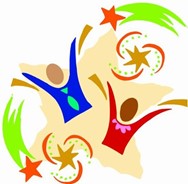 Sometimes we become interested in a hobby because we learned it at our parents’ knees. I have a couple of hobbies like that.
Sometimes we become interested in a hobby because we learned it at our parents’ knees. I have a couple of hobbies like that.
Mom’s Hobby—Embroidery
My mother liked to embroider in her spare time. I can recall often seeing her embroidery hoops out with a project underway. She kept a bin of embroidery floss in many colors for use in her newest creation.
Mom used to embellish our bed and kitchen linens with colorful designs sown on pre-stamped items like pillow cases and kitchen towels. She knew how to do the standard stitches like back stitch, chain stitch, cross-stitch, French knots, and satin stitch. She sewed with great precision, but she always tied knots in her threads. I later learned this practice is a no-no in embroidery world.
She taught me to embroider when I was in the fourth grade, and I liked it immediately. I, too, began decorating household items. Later, when my high school graduation time rolled around, I needed a white dress to wear beneath my white graduation gown. Mom made a dress, and I decorated both sleeves with an embroidered design. I still have that dress.
When I got older, I learned about a specialized form of embroidery from Norway called Hardanger. Family members say my mom’s Norwegian grandmother had been proficient at this, but Mom had never learned to do it. The family and cultural connection of this type of embroidery intrigued me, so I took a lesson and then taught myself more about it. Last year I earned a Cultural Skill pin in Hardanger Embroidery from the Sons of Norway.
After my mom died, I found a lot of embroidery supplies and embroidered items among her things. She had learned embroidery from her own Finnish mom, and some of the things I found had belonged to my grandmother. I kept it all. Now I have a large stash of embroidery floss and needles, lots of patterns, and several pieces that both my mom and grandmother completed.
Dad’s Hobby—Genealogy
My Dad always showed an interest in his family history. When I received a blank family tree chart as a teenager, he helped me fill it out to the best of his knowledge. Right away, I was hooked.
Dad put me in contact with other members of his family who pursued genealogy and knew about our family history. I learned that his family goes back to colonial times in America.
When I reached adulthood, I began to take genealogy classes. I completed the National Genealogical Society course in American Genealogy in 2004.
Over the years, I have worked hard to build my family tree. Dad took a continued interest in my findings and encouraged me to keep digging at our roots.
Today, I have notebooks and file cabinets full of family information. I maintain an online family tree. I have prepared numerous written character sketches for my ancestors several generations back. I love genealogy more now than I did when my dad first introduced me to the hobby.
These hobbies, one from my mom and one from my dad, have given me so much enjoyment over the years. I enjoy pursuing both, and both give me sense of connection to previous generations. They truly qualify as family hobbies.
Katherine, Still MIA
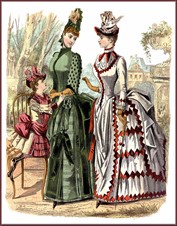 Despite several hours’ work, I have made no real progress in my search for my elusive German ancestor, Katherine Stillenbaugh/Staninbaugh. I have been unable to find any evidence supporting the hypothesis that she belonged to the Stilgenbauer/Stillabower clan that lived south of Indianapolis, IN in the 1860’s:
Despite several hours’ work, I have made no real progress in my search for my elusive German ancestor, Katherine Stillenbaugh/Staninbaugh. I have been unable to find any evidence supporting the hypothesis that she belonged to the Stilgenbauer/Stillabower clan that lived south of Indianapolis, IN in the 1860’s:
- Using census records and county histories, I constructed family trees for the three immigrant patriarchs who lived in that area: Jacob (1796-1865), Adam (1801-1863), and Johan Michael (1804-1881). Although I found several daughters and granddaughters, some named Catherine, none of these girls seem to fit the profile of my ancestor. Either they were born in the U.S. instead of Germany, died in childhood, or married someone other than my Thomas Sherman.
- I combed through the online databases for the Allen County Public Library, the Indiana Historical Society, the Indiana State Archives, and the Indiana State Library. I found almost no mention of either the Sherman family or the Stilgenbauer/Stillabower family.
- I reviewed the Family Search catalog for Johnson County, Indiana (where the Shermans lived and Katherine’s daughter was born in 1865) to determine whether they hold any records I might find helpful. The Johnson County courthouse burned in 1874, so many records were lost. They do not have much that I have not already analyzed.
Where do I go from here? I have a few steps in mind:
- Family Search does have a microfiche copy of an 1866 land ownership map for Johnson County. I could order that to help re-create the Sherman’s neighborhood at that time. People came and went between census years, and the map might hold additional names to search.
- One of Thomas Sherman’s sisters married Stephen Dyke, and this family remained in Johnson County after most of the other Shermans had moved on to Illinois and Missouri. I have done little research on the Dykes. Perhaps the records of these relatives hold a clue to my Thomas and his first wife.
- The Stilgenbauer/Stillabower families lived primarily in Brown and Bartholomew Counties, both adjacent to Johnson County. I can do more research in the records of those counties.
- I have not yet looked at land and probate records. I have not found an online source, and perhaps these records were destroyed in courthouse fires. I need to investigate this research avenue.
- DNA testing could provide a connection to the Stilgebauer/Stillabower line. I need to review our matches for this possibility.
In the meantime, Katherine remains a brick wall ancestor.
52 Stories #9—Childhood Hobbies and Pastimes
 What does a girl do while growing up in the oilpatch in the 50’s and 60’s? During my childhood we lived in small towns in Nebraska, North Dakota, and Wyoming as my dad pursued a career on the road as a petroleum landman. Because he was gone a lot and my mother did not know how to drive, we entertained ourselves mostly at home. I found several ways to do that:
What does a girl do while growing up in the oilpatch in the 50’s and 60’s? During my childhood we lived in small towns in Nebraska, North Dakota, and Wyoming as my dad pursued a career on the road as a petroleum landman. Because he was gone a lot and my mother did not know how to drive, we entertained ourselves mostly at home. I found several ways to do that:
- I loved dolls. I named my earliest one Carol, and I played with her a lot. When she was not enough and I wanted an additional doll, I requested a bride doll for Christmas. Naughty me—I opened the suspected gift ahead of time when my mother was not looking. Of course, I found out it was the perfect doll, but then I had to re-wrap it and act surprised when Christmas Eve rolled around. When I was a little older during my elementary school years, I often played Barbies with the neighbor girls. About the same time, my grandmother gave me a set of dolls representing the countries of the world, and I had many hours of fun with them, too. Troll dolls became popular when I was about 10, and I acquired a collection of those as well. I liked making and decorating houses for them out of cardboard boxes.
- During the second grade, I discovered a love of reading. I had received a “D” in deportment at school that year because I talked too much and disturbed the other children. My Dad decided the cure for me was to carry a fat book to school every day and pull it out whenever I had nothing to do. That year I began reading the Bobbsey Twins, Nancy Drew, and animal stories by Thornton W. Burgess. Dad took me to the library every weekend to replenish my supply of reading material, a habit I still follow.
- My mom took time to teach me the needle arts beginning when I as nine or so. I disliked making clothes, knitting, and crochet. Embroidery did appeal to me, and I finished a set of pillowcases for my first project. Over the years I have decorated many pieces of linen and clothing. I have sacks full of patterns, fabric, and embroidery floss.
- I learned to appreciate music as a small child. My brother and I shared a record player and a stack of records. In second grade I started piano lessons, and then I began choral singing a year later when we moved to Wyoming. We belonged to a church within walking distance of our house, and I joined the after-school children’s choir. On and off over the years I have continued to sing in a church choir, and my current one will tour in Germany later this year. I have also been called upon to play the piano sometimes for different groups, and currently I serve as the Musician for my local Sons of Norway lodge.
Looking back now, I am surprised at how sedentary my early life was despite living in an area known for outdoor recreation. My parents just had no interest in the outdoors beyond taking care of their own yard. They never took us for open-air activities such as camping, hiking, or skiing although they saw to it that we acquired life skills like riding a bike and swimming. Beyond that, we did not participate in any sports or attend sporting events.
Nowadays, I still pursue my early interests of reading, embroidery and music. None provided me with a way to make a living, but each has enriched my life. I am glad I have had the opportunity to learn and enjoy these hobbies.
PowerPoint—A Genealogy Tool
 Every once in a while I must take some time for computer training. The time will arrive again this weekend when our local Sons of Norway genealogy study group meets.
Every once in a while I must take some time for computer training. The time will arrive again this weekend when our local Sons of Norway genealogy study group meets.
This Saturday our leader wants to provide PowerPoint training for everyone. She hopes that familiarity with this software will encourage more people to step up to create entertaining programs for both the genealogy group and the Sons of Norway Lodge meetings.
I must confess that I am as guilty as anyone in avoiding proficiency with PowerPoint. Oh, I have had PowerPoint training in the past. I got through the training class at work about 10 years ago but never used it again. Now my knowledge is quite outdated because we did not learn how to acquire and insert images for the slides. I know how to create pages with text only.
Nowadays, the slides for an interesting presentation need illustrations. The very idea of finding and inserting these seems overwhelming to me. If I take my own photos, I will have to figure out how to transfer them to my PC and then put them in folders which I will never remember how to locate later. If I use someone else’s images, I will need to worry about acquiring the appropriate copyright permission. No wonder I do not volunteer to create PowerPoint presentations.
Other people’s testimonials do not encourage me to try it. One professional genealogist I know had done many, many valuable training classes over the years. She quit when PowerPoint became the standard of delivery. Even my son, a very tech-savvy Army officer, says he wishes PowerPoint had never been invented. His superiors want a PowerPoint for everything, and it takes up so much of my son’s time to prepare each one.
My husband/tech advisor has offered to teach the upcoming PowerPoint class for the Sons of Norway. He seems to have little trouble with it and readily volunteers to use it for speaking engagements. Perhaps he can give all of us some insight into how to create a presentation with good-looking slides.
Once armed with some ability to put together a few interesting PowerPoint slides, I might step up and provide a program or two for the Sons of Norway. I do not mind speaking to a group, and I have a lot of knowledge I could share. Perhaps others like me could do the same. I am glad our leader has this idea for encouraging us.
52 Stories #8—Shared Experiences
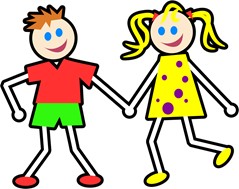 My husband/tech advisor and I married over 42 years ago. Consequently, we have lots of shared memories. Let’s see if I can recall a few of the highlights:
My husband/tech advisor and I married over 42 years ago. Consequently, we have lots of shared memories. Let’s see if I can recall a few of the highlights:
1972—Mutual friends introduced us at the University of Wyoming.
1973—We went to a movie on our first date, became inseparable, and got engaged later that year. He received a B.S. in engineering that spring and began graduate school.
1974—We were married at Prince of Peace Lutheran Church in Casper, Wyoming. We honeymooned in Hawaii where we tried surfing. We never did it again.
1975—I received a B.A. in education. He received an M.S. in engineering. We moved to Austin, Texas.
1976—We embarked on our first jobs. He worked at Texas Instruments while I taught in a Lutheran school.
1977—I began law school at the University of Texas at Austin.
1978—We bought our first house.
1979—Our eldest son was born.
1980—I graduated from law school. We returned to our home town in Wyoming, and he went to work for Tooke Engineering. We attended his first high school reunion.
1981—I went to work as a Petroleum Landman for Gulf Oil and Exploration Company. He began spending evening and weekends as a sports referee.
1982—He took a new job with MiniMart convenience stores managing the computer department. I volunteered as a piano accompanist at Good Shepherd Lutheran Church.
1984—Our younger son was born. Our eldest son started kindergarten. We took a 10th anniversary cruise around the Hawaiian Islands.
1985—I was transferred to Colorado after Gulf was sold to Chevron Corporation. He left MiniMart and went to work for McDonnell Douglas in Aurora, CO. We began long careers as sports and Boy Scout parents, starting with soccer and moving on through swimming, tee ball, basketball, lacrosse, and hockey. The boys both eventually achieved the Eagle Scout rank.
1986—He began free-lance computer consulting, and his work took him to China. I passed the Colorado Bar Exam.
1987—He changed jobs again, going to work for Gates Corporation.
1988—I left Chevron and began a stint as a stay-at-home mom. During those years I taught Sunday School and volunteered as a Cub Scout Den Mother.
1990—He had back surgery the same week our house was severely damaged in a hail storm.
1992—I went back to work as a substitute teacher in the local middle and high schools. He stopped refereeing and began arranging handbell music.
1993—We joined in a family hunting trip to Grand Teton National Park, and our eldest son got his first elk.
1994—We took a Caribbean cruise for our 20th anniversary.
1995—I began a 4-year stint on the Colorado Genealogical Society Board of Directors.
1996—I went to work part-time for the local library district.
1997—Our eldest son graduated from high school and began college at my husband/tech advisor’s engineering school.
1999—We took another Caribbean cruise for our 25th anniversary.
2000—He had a second back surgery.
2001—We took a third Caribbean cruise with the in-laws for their 50th wedding anniversary. Our older son graduated from the University of Wyoming.
2002—Our younger son graduated from high school and joined the Army.
2003—We joined Bethany Lutheran Church. We took my dad on a 75th birthday trip to England and Scotland in May. Our younger son began attending the U.S. Military Academy at West Point in August, and we became West Point Parents. We attended Plebe Parent weekend and our first All-Service Academy Ball. Over the next four years we took several trips to West Point for special events, and we used that as a launching spot for vacations in every direction—Niagara Falls, Fort Ticonderoga, Philadelphia and Valley Forge, Boston and Cape Cod.
2004—He began bell ringing with the Bethany Carillons Handbell Choir, and I joined the group the following year.
2007—Our son graduated from West Point and got married.
2008—We took a Rhine River cruise with my husband’s brother and his wife. I retired. Our first granddaughter was born, and we attended her baptism.
2009—Our first grandson was born.
2010—Our elder son was married, and we acquired two step-grandaughters.
2011—Our second grandson was born. I left the handbell choir and joined the Bethany Chancel Choir. That Christmas, I had the opportunity to perform Handel’s Messiah. We sold the house the boys grew up in and bought a patio home.
2012—Another granddaughter was born.
2013—We took a trip to Norway to celebrate our birthdays. We visited farms where our ancestors had lived in Hedmark and Nordland.
2014—We traveled to spots my ancestors lived in Finland and Russia to celebrate our 40th wedding anniversary. We joined the Sons of Norway and became active in Fjelldalen Lodge.
2015—With the Chancel Choir, I performed Bach’s St. John’s Passion in German. I was elected Musician of the Sons of Norway Lodge.
2016—We took our first train trip when we rode Amtrak’s California Zephyr to San Francisco. I represented Fjelldalen Lodge at the District Six Convention.
This list cannot contain all we did over the years. It simply lists the high points I can recall in one sitting.
Lots of great memories!
A Seemingly Dead End with Katherine
 Again I spent the week searching for my mysterious German ancestor Katherine Stillenbaugh/Stansbaugh, and again I found almost nothing. Katherine’s daughter was reportedly born at Edinburg, Johnson County, Indiana in April 1865 so I tried a few different sources for that location:
Again I spent the week searching for my mysterious German ancestor Katherine Stillenbaugh/Stansbaugh, and again I found almost nothing. Katherine’s daughter was reportedly born at Edinburg, Johnson County, Indiana in April 1865 so I tried a few different sources for that location:
- A close review of a 1913 history of Johnson County revealed no mention of a Stillenbaugh or Stansbaugh family in the county. I also looked for similar sounding German names like Stilgenbauer and Stillabower, but I found none of those, either.
- I searched the 1860 U.S. census for Johnson County for any girl named Katherine/Catherine who was born between 1830-1850. The only unmarried Catherine was Cath McLane, born 1840, living in Clark. This does not seem a likely match.
- I searched Bartholomew, Brown, Johnson and Shelby counties for single girls named Katherine/Catherine who were born in Germany between 1830-1850. There were none in Brown, Johnson, and Shelby Counties. In Bartholomew, I found five: Catherine Ball, Catherine Mench, Catherine Strawbeck, Catherine Vogelpohl, and Catherine Woerner. I could follow up on these girls to locate their marriage records. This would tell me the names of their spouses. Anyone not married by 1865 would be a candidate for the woman who married my 2nd great-grandfather.
After finding nothing probative in these searches, I broadened my census search terms to look nationwide for single girls named Katherine/Catherine Stil* or Stan* born 1830-1850 in Germany. This search turned up three women:
- Catherine Stilgebauer, born in Ohio in 1837, living in 1860 in Bucks Twp., Tuscarawas Co., OH with husband Jacob and daughter Sophia. Wrong marital status, wrong birthplace.
- Catherine Stansbaugh, born in Baden in 1846, living in 1860 Bethlehem, Stark County Co., OH with parents John and Margaret. An alternative surname of Steberger for this person has been added on Ancestry.com. I should search for more information on this woman. Did she move to Indiana? Was her true name Stansbaugh (wouldn’t that be great?) or Steberger?
- Catherine Stillbower, born in 1830 in Germany, living in 1850 in Perry Twp., Stark Co., OH in the Henry Shike household. She did not appear under the same surname in 1860, so she probably had married by then.
None of this gives me much to go on. With no marriage record, no certain census record, and no grave for my Katherine, my only hope will be either to uncover something in a record created by one of the as-yet-unidentified male relatives in her life or to find a DNA match to a German family. I have a lot of records left to search.